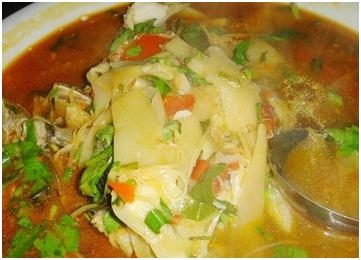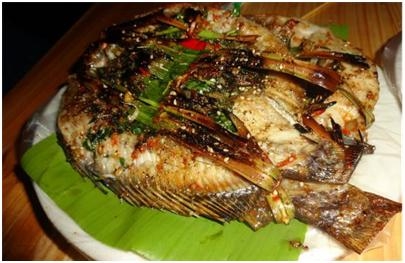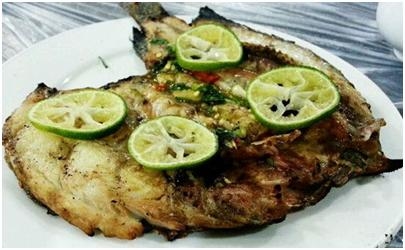代寫CS360、代做Java/Python程序設(shè)計(jì)
時(shí)間:2024-04-17 來源: 作者: 我要糾錯(cuò)
CS105/CS360/SE360
[Fundamentals of]Artificial Intelligence
Group project for An optimal samples selection System
It is known that the amount of data generated has been increasing tremendously in the last few years due to the
ease of accessing to the internet, cheap or inexpensive mass storage devices, the ease of transferring data
through internet, communication lines and digital data are used in all walks of life. Nowadays, these big data
have been used for data mining, knowledge discovery, machine learning, statistical learning, statistical analysis
and experiments. In order to extract or discover useful data, information or knowledge from these big data, one
of methods we usually adopted is samples selection.
In this group project, you are expected to extract a subset of samples from these big data. In order to extract this
subset of data (samples), we have to make sure that the subset of samples extracted or selected should be as fair
and unbiased as possible and also as optimal as possible. In the following we propose one method.
Assuming that there are m samples , any samples out of these m samples are selected.
There are mCn groups of n samples. From one of these groups of n samples, we randomly select e.g., k=6
samples to form some groups. So there will be nCk groups of k=6 samples selected. Among these
groups of k=6 samples, we would like to optimize them by selecting ONLY some of them. The conditions that
need to be fulfilled are listed as follows:
1. There are at least ONE group of k samples, in which samples have been selected from the j
(where ) samples, i.e., when j=4, we have s=3 or 4; when j=5, we have s=3, 4 or 5; when j=6, we
have s=3, 4, 5 or 6; and when j=7, we have s=3, 4, 5, 6 or 7.
E.g. 1, when m=45, n=7 (assume we have chosen 7 samples, A,B,C,D,E,F,G and k=6, j=5, s=5, we could
obtain the following minimum 6 groups of k=6 samples, which guarantee at least ONE group of k=6
samples has s=5 samples groups from ALL j=5 samples groups of n=7 samples,(i.e.,nCj=7C5 and jCs =5C5).
1. A,B,C,D,E,G 2. A,B,C,D,F,G 3. A,B,C,E,F,G
4. A,B,D,E,F,G, 5. A,C,D,E,F,G 6. B,C,D,E,F,G
E.g. 2, when m=45, n=8 (assume we have chosen 8 samples, A,B,C,D,E,F,G,H and k=6, j=4, s=4, we could
obtain the following minimum 7 groups of k=6 samples, which guarantees at least ONE group of k=6
samples has s=4 samples groups from ALL j=4 samples groups of n=8 samples, (i.e., nCj=8C4 and jCs=4C4).
1. A,B,C,D,G,H 2. A,B,C,E,G,H 3. A,B,C,F,G,H
4. A,B,D,E,F,G 5. A,C,D,E,F,H 6. B,C,D,E,F,H 7. C,D,E,F,G,H
E.g. 3, when m=45, n=9 (assume we have chosen 9 samples, A,B,C,D,E,F,G,H,I and k=6, j=4, s=4, we
could obtain the following minimum 12 groups of k=6 samples, which guarantees at least ONE group of
k=6 samples has s=4 samples groups from ALL j=4 samples groups of n=9 samples, (i.e., nCj=9C4 and 4C4).
1. A,B,C,D,E,I 2. A,B,C,E,G,H 3. A,B,C,F,H,I 4. A,B,D,E,F,G
5. A,B,D,G,H,I. 6. A,C,D,E,F,H 7. A,C,D,F,G,I 8. A,E,F,G,H,I
9. B,C,D,F,G,H 10. B,C,E,F,G,I 11. B,D,E,F,H,I 12. C,D,E,G,H,I
E.g.4, when m=45, n=8 (assume we have chosen 8 samples, A,B,C,D,E,F,G,H and k=6, j=6, s=5, we could
obtain the following minimum 4 groups of k=6 samples, which guarantees at least ONE group of k=6
samples has ONE s=5 samples group from ALL j=6 samples groups of n=8 samples, (i.e., nCj=8C6 and 6C5).
1. A,B,C,E,G,H 2. A,B,D,F,G,H 3. A,C,D,E,F,H 4. B,C,D,E,F,G
E.g. 5, when m=45, n=9 (assume we have chosen 9 samples, A,B,C,D,E,F,G,H,I and k=6, j=5, s=4, we
could obtain the following minimum 3 groups of k=6 samples, which guarantees at least ONE group of k=6
samples has ONE s=4 samples group from ALL j=5 samples groups of n=9 samples, (i.e., nCj=9C5 and 5C4).
1. A,B,D,F,G,H 2. A,C,E,G,H,I 3. B,C,D,E,F,I
E.g. 6, when m=45, n=10 (assume we have chosen 10 samples, A,B,C,D,E,F,G,H,I,J and k=6, j=6, s=4,
we could obtain the following minimum 3 groups of k=6 samples, which guarantees at least ONE group of
k=6 samples has ONE s=4 samples group from ALL j=6 samples groups of n=10 samples, (i.e., 10C6 and
6C4).
1. A,B,E,G,I,J 2. A,C,E,G,H,J 3. B,C,D,F,H,I
E.g. 7, when m=45, n=12 (assume we have chosen 12 samples, A,B,C,D,E,F,G,H,I,J,K,L and k=6, j=6, s=4,
we could obtain the following minimum 6 groups of k=6 samples, which guarantees at least ONE group of
k=6 samples has ONE s=4 samples group from ALL j=6 samples groups of n=12 samples. (i.e., nCj=12C6
and jCs=6C4).
1. A,B,D,G,K,L 2. A,C,D,H,J,L 3. A,D,E,F,I,L
4. B,C,G,H,J,K. 5. B,E,F,G,I,K 6. C,E,F,H,I,J
2. A user friendly interface should be provided. A system title is given as, e.g., “An Optimal Samples Selection System”.
3. The user needs to input the values for parameters m, n, k, j and s. They are all positive integers. See Screens below.
4. The system randomly selects n out of m numbers or a user inputs n numbers, and displays these n numbers on screen.
5. Output groups of k=6 samples (results) to a DB file, e.g., 40-9-6-4-4-x-y for m=40, n=9, k=6, j=s=4 for the x
th
run.
6. Provide a way to EXECUTE and DELETE, etc. the obtained groups of k samples (results) onto the screen from a
DB file, e.g., 45-9-6-4-4-x-y.These groups of k=6 samples are selected from the list. Please see the screens below.
7. Students are required to form groups yourselves. Each group should have 3 students. You are advised to include in
your group at least ONE student who knows how to do programming in any programming languages.
8. Use numeral values, e.g., positive INTEGERS, 01,02,03,…..,54 instead of big capital letters A,B,C,D,E,F….,Z for the
m and n numbers.
9. Submit to me names of your group members next week. Group numbers will be provided to you later for presentation.
10. A presentation and demonstration is a MUST in weeks 14 and/or 15.
11. Each group is required to have a 15 minutes presentation which includes the brief introduction, description of
method(s) adopted/used, what have been achieved in this project, and a demonstration of your system is a MUST in
the presentation.
12. A clear, succinct, easy to understand detailed user manual/guide on how to INSTALL and EXECUTE your
DEVELOPED system step by step and a project report must be submitted. The PROJECT REPORT must include
method(s)/methodology (supported by diagram(s), etc.), features you have developed/used, contributions such
as good running time, optimal/near optimal results, etc., and problems such as long time to get results, results
not good enough, etc. of your system, results of sample runs, etc. should be submitted in hardcopy.
13. You are required to submit a USB which contains your developed system, all your source files (codes), free/share
ware, database files, DB files of k=6 samples (sample runs outputs/results), and the REPORT mentioned in point 12.
14. Bonuses will be given to group(s) that allow users to select as many different parameters as possible for m, n, k, j and
s, good method(s) adopted, could generate optimal/ near optimal solutions. Furthermore, bonuses will be given to the
developed system(s) that could be executed in a short time and run on mobile phones.
15. All teams must submit their projects in a USB and hardcopy of the REPORTs (User Manual and Project Report)
in Week 15. Group number, names, student numbers of your group members should be listed in your REPORT.
請(qǐng)加QQ:99515681 郵箱:99515681@qq.com WX:codinghelp
標(biāo)簽:
無相關(guān)信息















